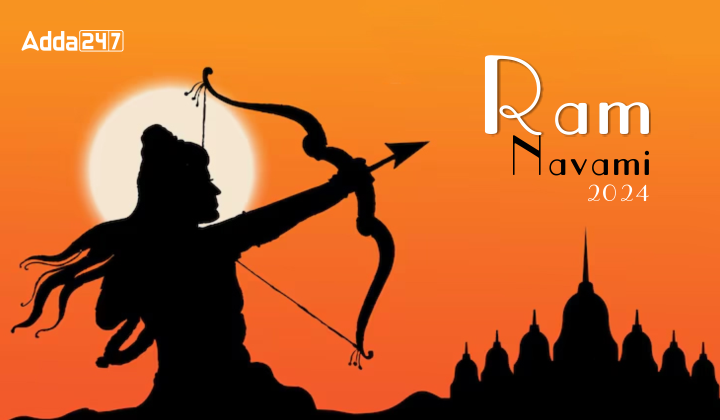Table of Contents
Ram Navami 2024
Ram Navami is a Hindu festival that commemorates the birth of Lord Rama, a divine incarnation of Lord Vishnu. According to the sacred text, Lord Rama was born to King Dasharatha and Queen Kaushalya in Ayodhya on the auspicious ninth day of Chaitra month (March–April). It is celebrated on the ninth day of Chaitra Navratri. Ram Navami 2024 is being observed on 17 April 2024 all across India. According to Hindu beliefs, Lord Rama, revered as the embodiment of righteousness and virtue, descended from the heavenly abode and took birth in the earthly realm of Ayodhya as a newborn prince. The birth of Lord Rama, also known as Maryada Purushottam, is celebrated as a symbolic triumph of truth over falsehood and good over evil. The narrative of the Ramayana recounts how Rama’s wife Sita was abducted, prompting him to embark on a quest to rescue her. This journey exemplified how adhering to the path of righteousness can establish peace and harmony, while evil can never prevail over humanity.
Historical and Mythological Significance
The legend of Ram Navami is deeply rooted in the epic Ramayana, which narrates the life and adventures of Lord Rama. According to Hindu mythology, Lord Rama was born to King Dasharatha and Queen Kaushalya in Ayodhya on the auspicious ninth day of Chaitra month. His birth is believed to be a divine intervention to rid the world of the demon king Ravana, who symbolizes evil and injustice. The Ramayana depicts the journey of Lord Rama, his wife Sita, and his loyal devotee Hanuman, showcasing the triumph of truth, love, and righteousness over falsehood and wickedness.
Life of Lord Rama
Despite being born into a royal family, Lord Rama’s life was marked by numerous challenges, including a fourteen-year exile spent in austere conditions. He faced ethical dilemmas and moral quandaries, yet he remained steadfast in fulfilling his moral obligations. The birth of Lord Rama is thus regarded as a symbolic birth of humanity itself, representing the ideals of truth, justice, and righteousness. A popular maxim associated with Ram Navami states, “मन से रावन जो निकाले राम उसके मन में है” which translates to “If one can conquer the metaphorical Ravana (symbolizing evil) within oneself, then Lord Rama (representing virtues) resides in that person’s heart.” This adage encapsulates the essence of Lord Rama’s teachings, encouraging individuals to overcome their inner demons and embrace the virtues embodied by the divine avatar.
The dichotomy between the embodiment of evil in Ravana and the essence of true humanity in Rama is emphasized. It suggests that by embracing the path of righteousness and compassion, one invites the presence of Rama into their heart, whereas indulging in cruelty and malevolence leads to the dominance of Ravana, thereby driving away the peace associated with Rama’s presence.
Significance of Lord Rama in Modern Times
Lord Rama serves as a timeless exemplar of patience and fortitude, even amidst the most trying circumstances, imparting invaluable lessons to humanity. In the face of the current global challenges, reflective of the consequences of harboring Ravana-like traits, Lord Rama’s enduring patience offers solace and guidance.
Banished from his own kingdom, Lord Rama emerges as a paragon of resilience, showcasing the power of perseverance coupled with unwavering faith in his values and the teachings of his parents. His reverence for his elders and their moral guidance serve as guiding lights, leading one towards a path of virtue, happiness, and eventual success. The essence lies in wholeheartedly embracing these teachings without skepticism, as demonstrated by Lord Rama’s unwavering commitment to honoring his father’s words, encapsulated in the adage, “प्राण जाये पर वचन न जाये!!! “





 GA Capsule for SBI Clerk Mains 2025, Dow...
GA Capsule for SBI Clerk Mains 2025, Dow...
 The Hindu Review October 2022: Download ...
The Hindu Review October 2022: Download ...
 RBI Grade B Interview Preparation Tips
RBI Grade B Interview Preparation Tips


